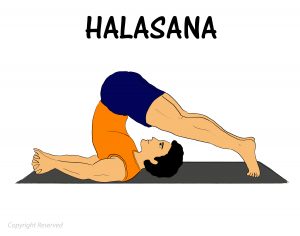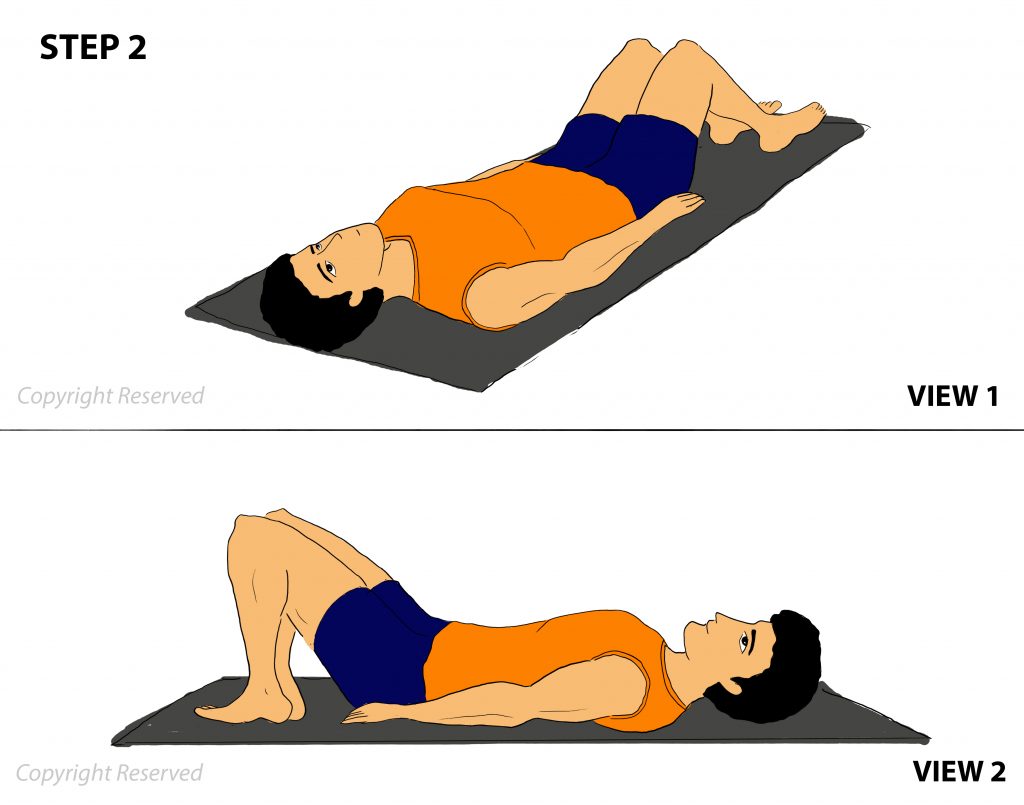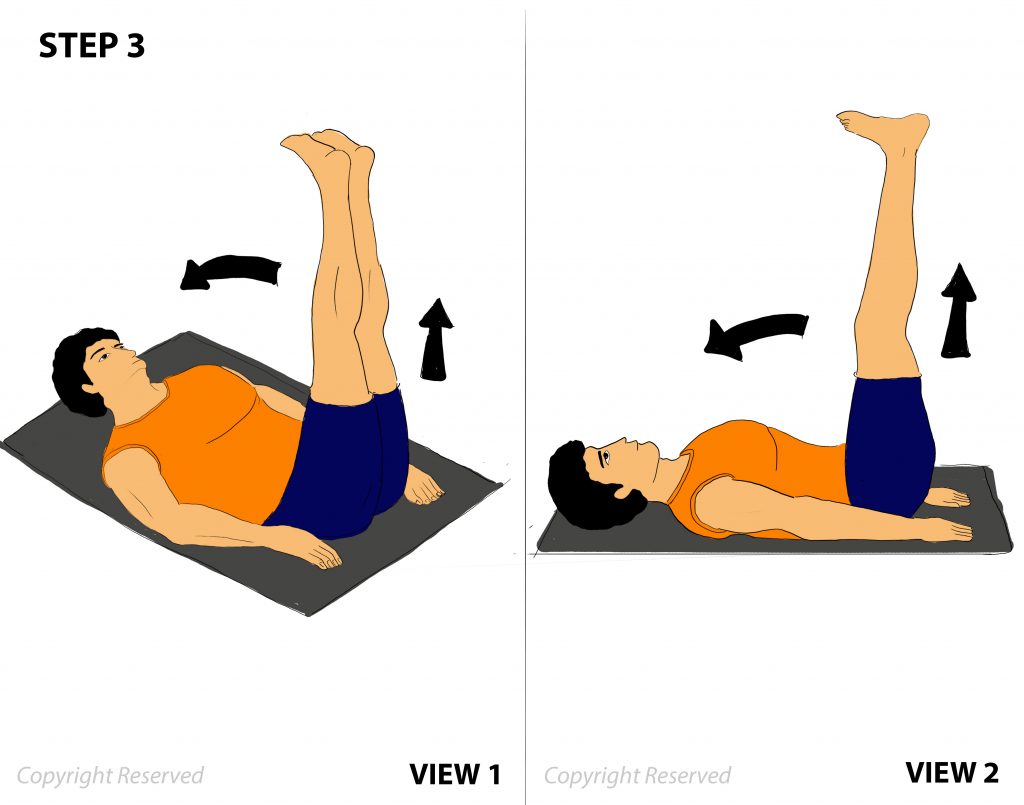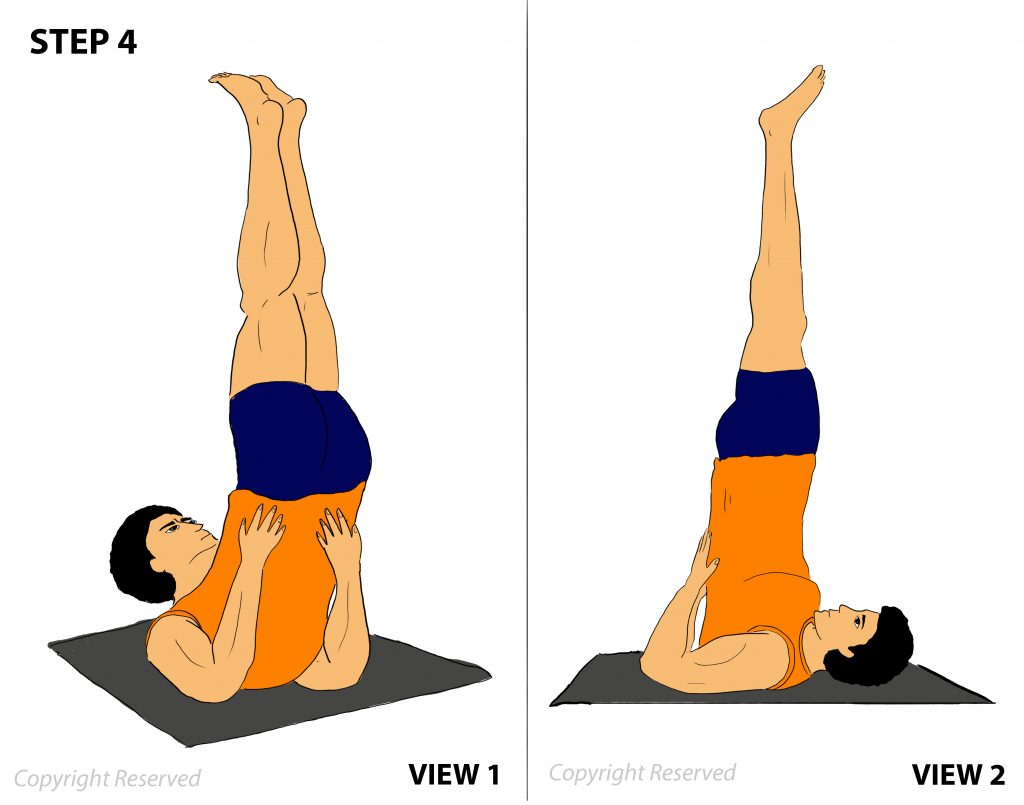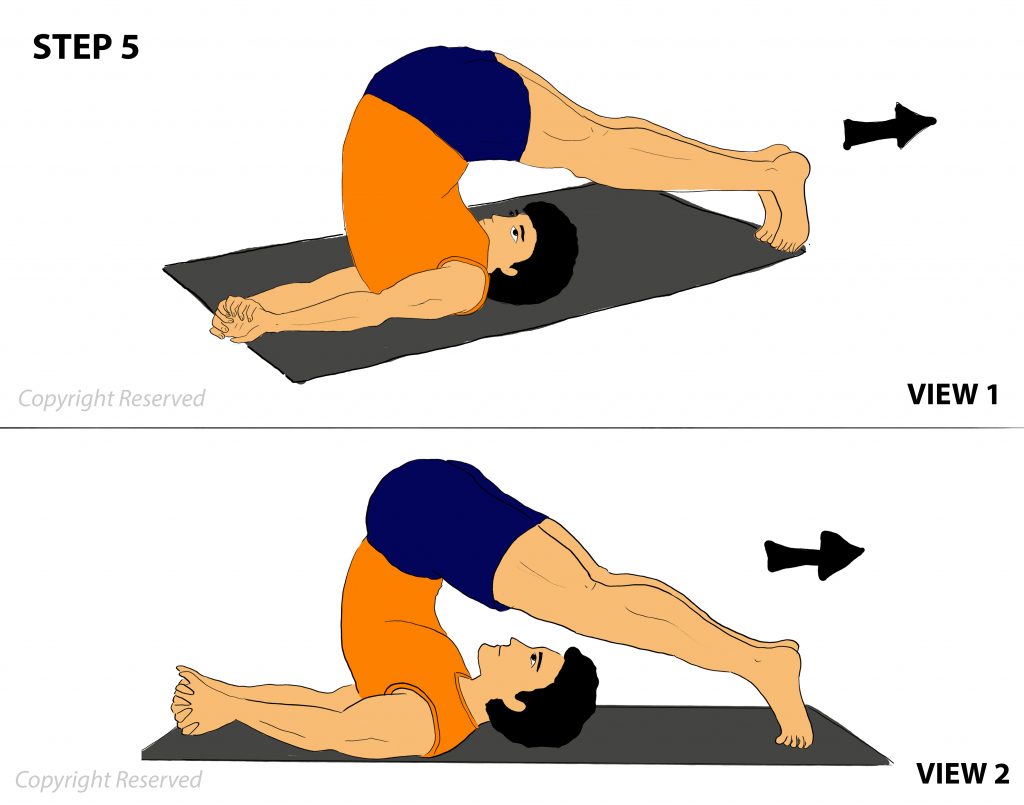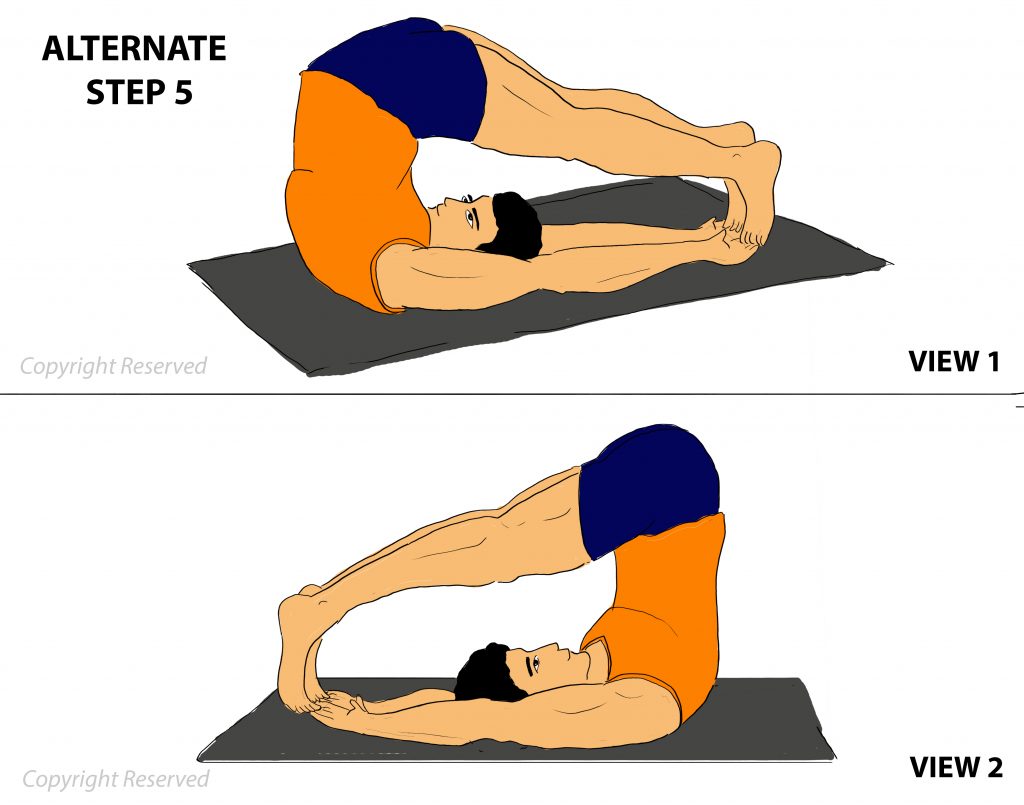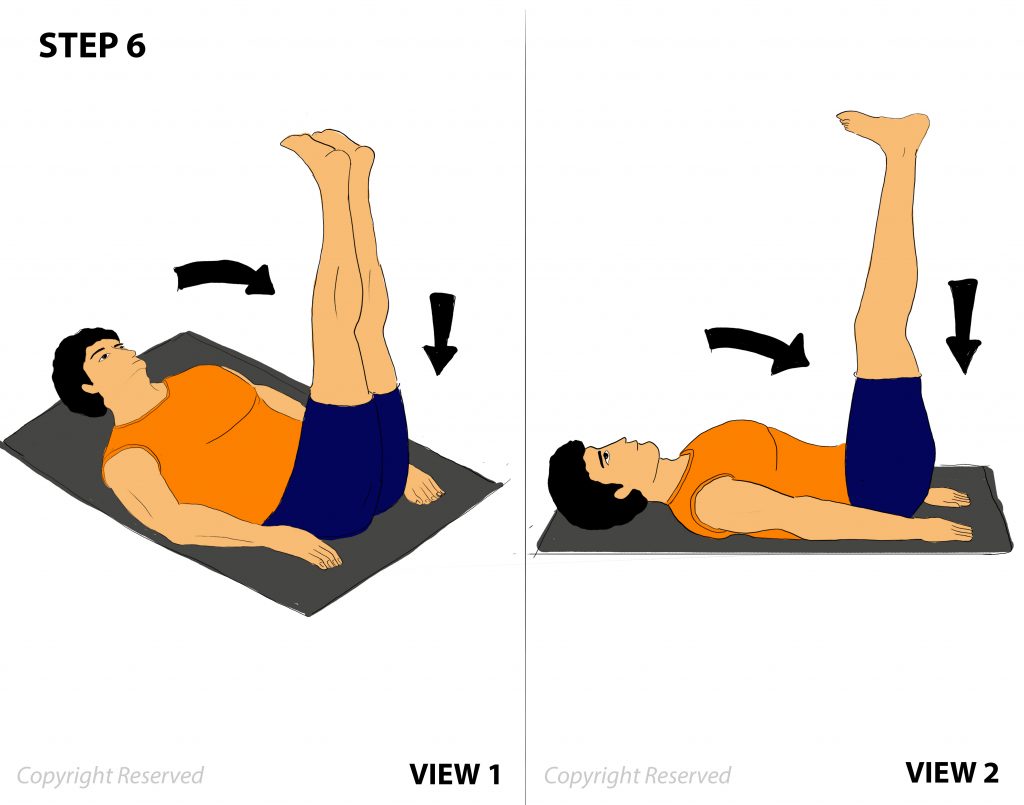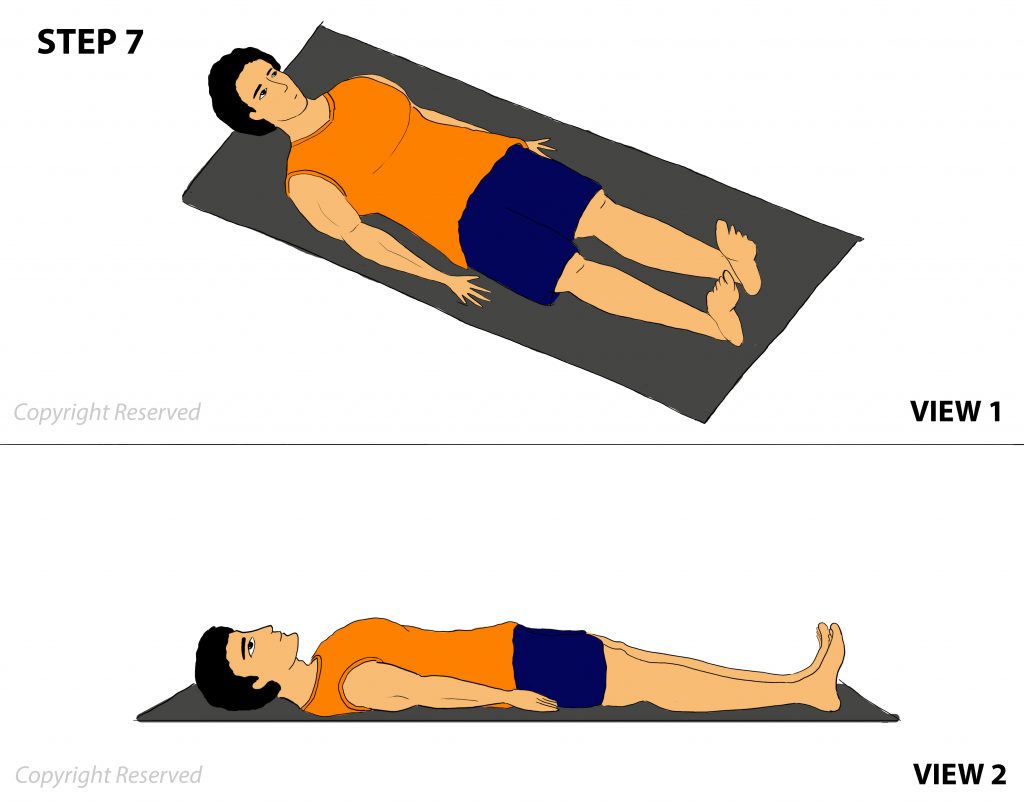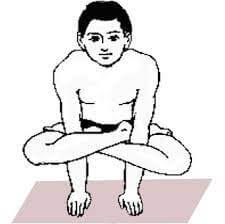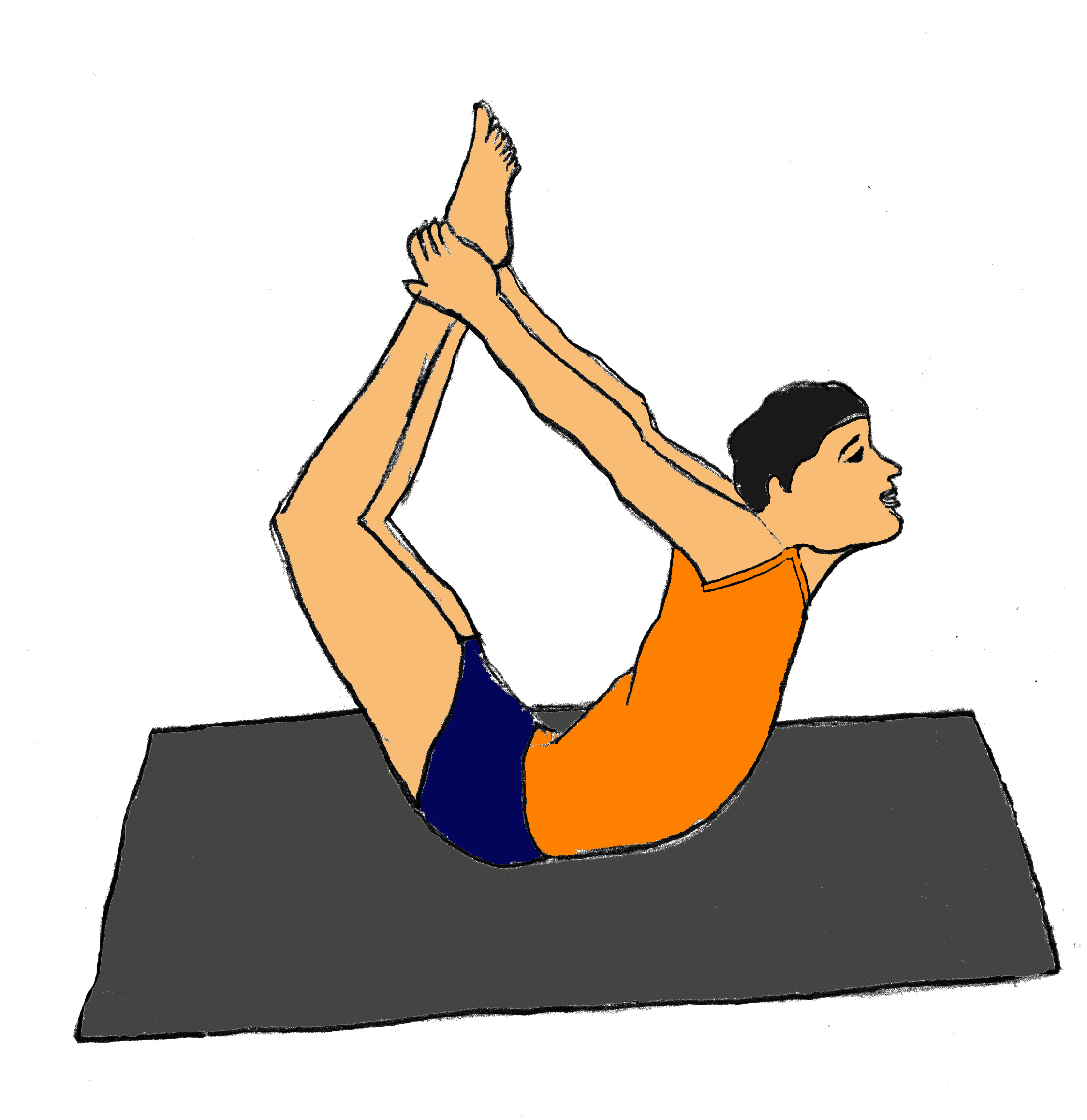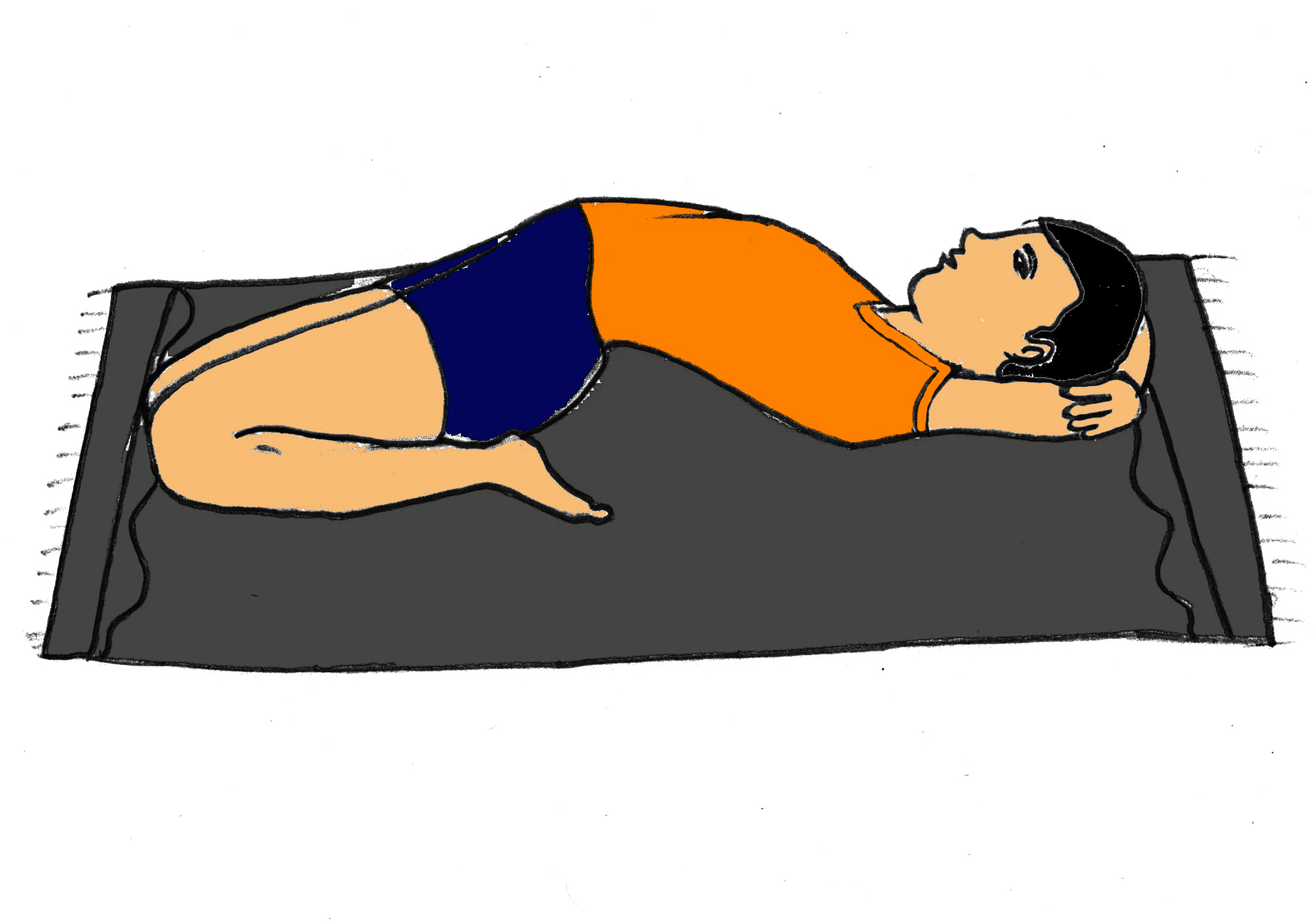Halasana
Halasana, also known as the Plough Pose, is a type of asana that mainly falls under Hatha Yoga. The name of the asana is derived from hala or plough since the body actually takes the form of a plough while a person performs this asana. This yoga pose offers a range of physical health benefits and is also ideal for those who want to have greater control over their senses for meditative purposes.
Steps of Halasana
Here are the steps to practice the plough pose of Halasana.
- Lie down on the surface of the floor in supine position. Keep your arms beside the body and put the palms face down.
- Bend your knees and rock your legs right up and back.
- As you exhale slowly, straighten the knees for attaining proper posture. Make sure that you keep the torso perfectly perpendicular to floor while stretching and extending the legs fully.
- Inhale slowly and draw the chin away from sternum; soften the opening of your throat just up the shoulders and press into ground using your upper arms for creating a lift.
- In order to make the most of this pose, move your legs as further as possible from your head. You will achieve chin lock during this stage. The pressure at this point is put on thyroid glands.
-
Interlace your fingers behind your back to gently the shoulder blades squeeze together. If you want, you can also slide your arms right your head for grabbing your toes.
- Stay in this position while maintaining your breathing for about 4 to 10 counts based on your overall level of comfort.
- Exhale as you gradually retrieve your legs and keep them perpendicular to mat.
- Next, return to the supine position to do another round of the exercise.
- Repeat it about 3 to 4 times.
Preparatory Poses associated with Halasana
Here are the poses that you must practice before you start doing Halasana.
- Setu Bandha Sarvangasana
- Salamba Sarvangasana
Performing Tips
When you are performing this asana during the initial stages, it is best that you do not overstretch your neck as it may lead to injuries. You must try to push the top section of your shoulders down to offer support to your back and then lift the shoulders just a little close to your ear. Such a posture can help to make sure that the throat and back area of the neck remains soft. You should also try and open up the sternum by applying pressure to the shoulder blades as you keep them firmly against the back.
The best time to practice Halasana is during the early morning. However, if you have things to do in the morning or find it difficult to wake up during the early hours, you can also practice halasana during the evening. Only make sure that your bowels and stomach are empty. Maintain a gap of at least 5 to 6 hours between the meal and your yoga practice session.
The science of Halasana
Halasana is the ideal form of asana when you are looking to rejuvenate and nurture your whole body on a regular basis. It helps to increase blood flow in the body and improves suppleness of the thoracic and lumbar regions of the body. The asana also removes tension and stress from the neck and throat areas. People having phlegm or mucous in the sinuses or the respiratory system can benefit from Halasana since it can help in removing all of them out. Regular practice can also help in streamlining the breathing process.
Halasana can help in the relaxation and healing of sympathetic nervous system. The asana can help in balancing secretions of the glands, particularly adrenaline and thyroxin. It can also help in removing toxins from digestive and urinary tracts. Patients of high blood pressure can perform this asana for relieving hypertension.
Benefits of Halasana
- This asana helps to improve the strength and tone of the spinal cord and the back muscles
-
It helps to boost functions of thyroid, parathyroid, pituitary and adrenal glands. Since all the other vital endocrine glands are effectively regulated by the four main glands, this asana helps to improve overall functioning of endocrine system as a whole.
- It also enhances the abdominal and the leg muscles
-
The asana greatly improves working of spinal nerves simply by creating effective pressure on nerves around the neck region. The nerves in the neck region are usually sympathetic, which helps in enhancing operations of the sympathetic nervous system.
- It is good for dyspepsia
- It increases blood circulation
- The asana activates, lightens and warms up the overall psycho – physiological system
- It can help in calming the brain
- The asana is useful for curing asthma and bronchitis
- It can help in managing symptoms of high blood pressure
- It increases the flexibility and brings a sensation of complete relaxation when it comes to leg cramps
- The muscles ligaments of the calves and thighs gets stretched and relaxed through this asana
- The asana helps to release all signs of back strain, thus removing pain and enhancing posture
- It makes the spinal cord flexible and strong
- It is beneficial for all diabetic people since it helps to normalize blood-glucose levels
- It helps to improve digestive system and gets rid of gastric problems and constipation. It also enhances digestion process and effectively regulates appetite.
- Helps women during their menopause years
- It stimulates reproductive organs
- It helps to reduce stress and fatigue
- Strengthens immune system
- It is highly therapeutic for headache, backache, insomnia, infertility and sinusitis
- The asana also regulates metabolism effectively and assists in weight loss
Precautions and contraindications associated with Halasana
If you are having neck injury, diarrhea or menstruation, it is advisable that you do not practice Halasana.
Here are some of the other precautions that you should be aware of when it comes to practicing Halasana.
-
If you have asthma and/or high blood pressure, make sure that you support your legs using props as you perform this asana.
-
In case you are pregnant, practice this asana if you’ve been doing it for quite a long time. Refrain from starting to practice halasana when you are pregnant.
-
While practicing halasana, if you touch your both feet to the surface of the ground, it becomes advanced yoga pose. Make sure that you have a highly experienced yoga teacher to guide you when you perform it.
Halasana is one of the best yoga postures that you can practice on an everyday basis.So practice halasana regularly to benefit from the wide range of changes that it can create on your body.
References
Click Here
Click Here
Click Here
Click Here
Click Here
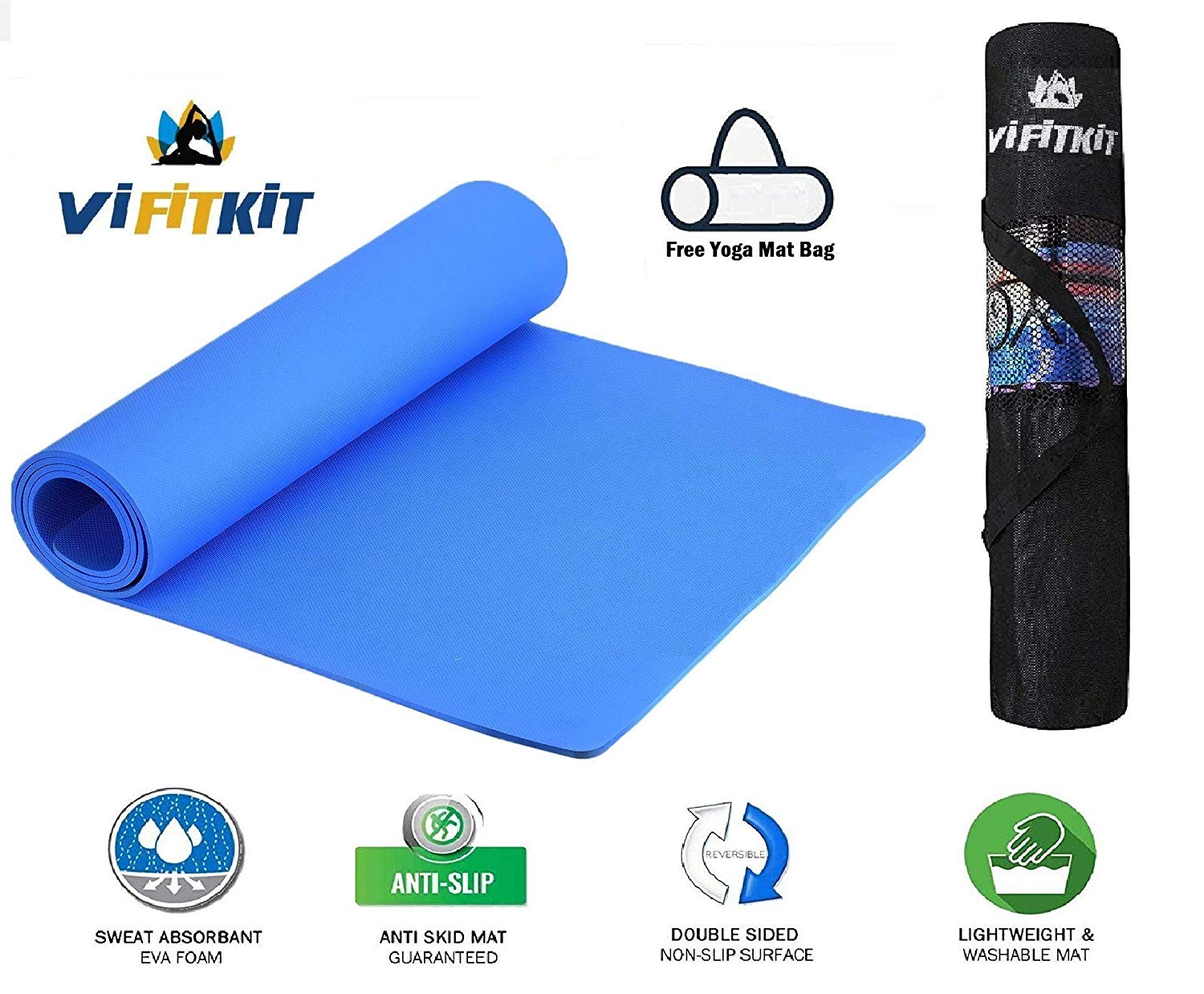
VI FITKIT Yoga Mat Anti Skid EVA Yoga mat with Bag for Gym Workout and Flooring Exercise Long Size Yoga Mat for Men and Women (Color - Blue)
Price: Rs 399.00 FREE Delivery. Details
About The Product
- With high density foam material, The thick ( 3 mm thick ) premium mat with comfort cushion spine, hips, knees and elbows on hard floors. This makes it a perfect size for both men & women.
- SWEAT RESISTANT AND WASHABLE YOGA MAT - Next time don’t stress when you sweat while doing yoga. The yoga mat is completely sweat resistant and has a Moisture resistant Technology which makes the mat easily washable with soap and water.
- This Yoga Mat is designed to give you the most comfortable yoga experience possible. The extra thick mat protects joints without compromising support or stability
- DURABLE & ECO FRIENDLY YOGA MAT - The EVA material is extremely durable and eco friendly. It lasts upto 5 times more than a regular plasticky mat! The material is biodegradable and free from PVC, silicon, latex and other toxic materials. We believe in creating quality and Eco friendly products for our customers!
- Care Tips: Do not place in washing machine or dryer, Please clean before and after using, clean regularly and keep it dry for healthy using.
